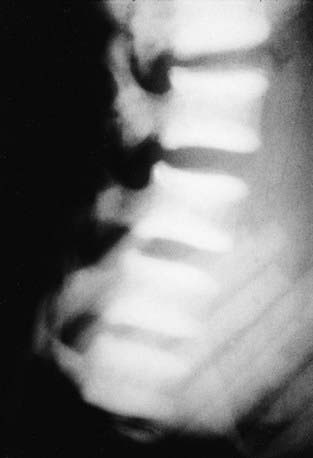Chapter 690 Disorders Involving Defective Bone Resorption
Osteopetrosis
The severe form is usually detected in infancy or earlier because of macrocephaly, hepatosplenomegaly, deafness, blindness, and severe anemia. Radiographs reveal diffuse bone sclerosis. Later films show the characteristic bone-within-bone appearance (Fig. 690-1). With time, infants typically fail to thrive and show psychomotor delay and worsening of cranial neuropathies and anemia. Dental problems, osteomyelitis of the mandible, and pathologic fractures are common. The most severely affected patients die during infancy; less severely affected patients rarely survive beyond the 2nd decade. Those who survive beyond infancy usually have learning disorders but might have normal intelligence despite hearing and vision loss.




